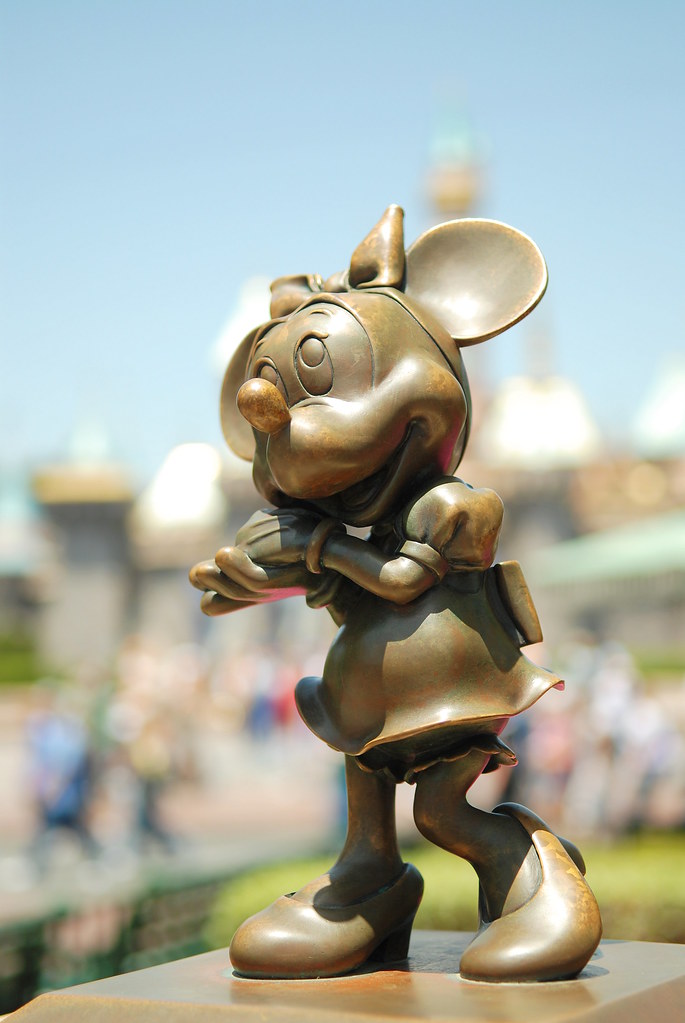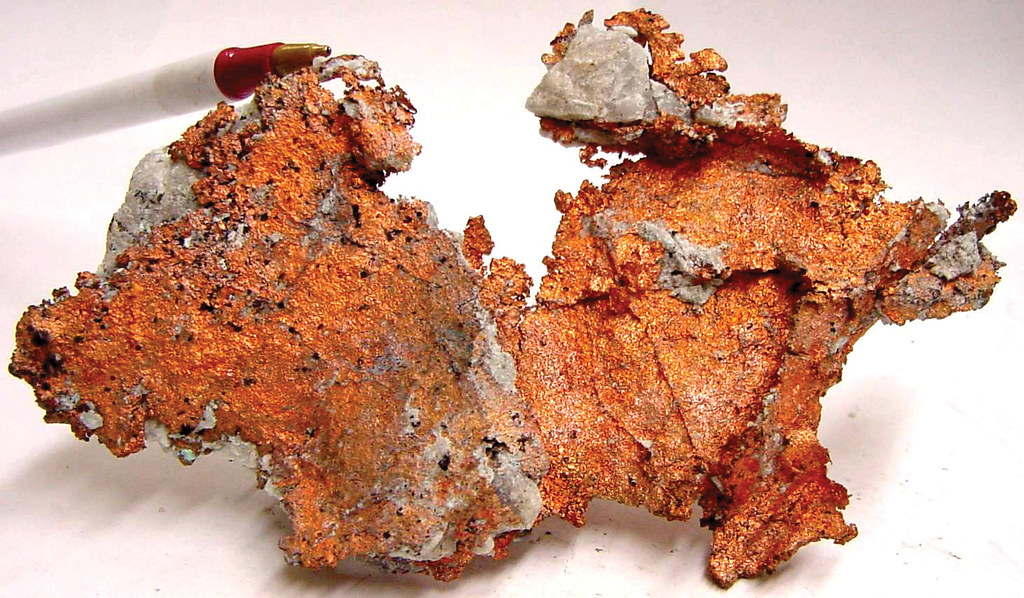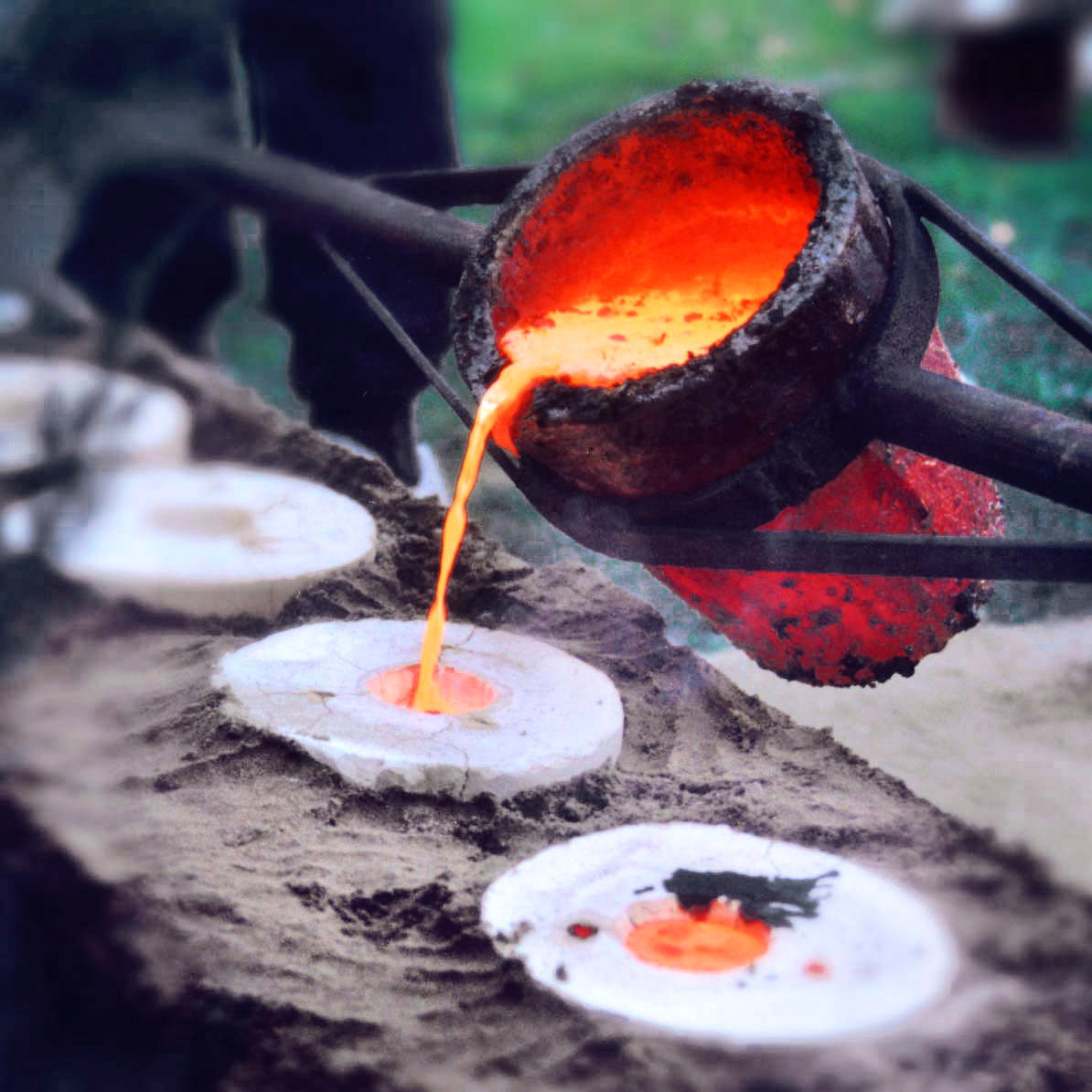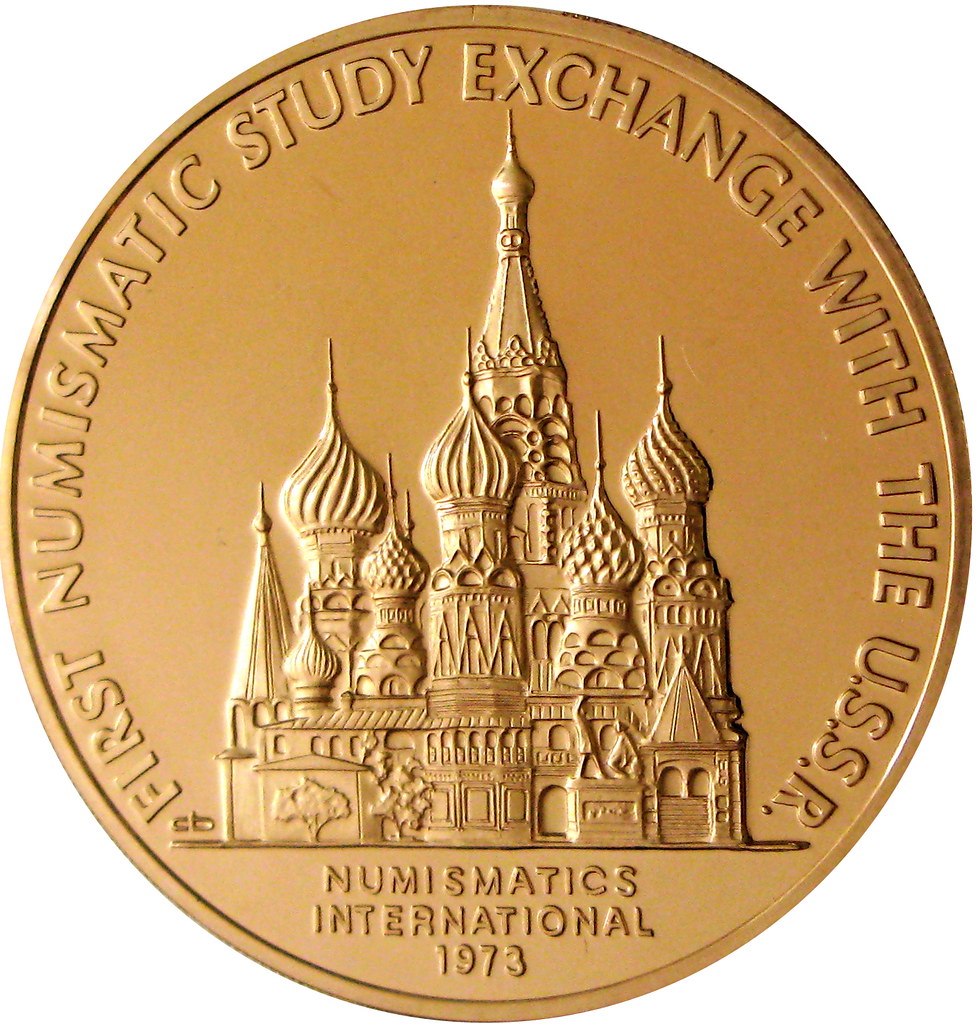Bronze is a metal alloy composed of copper and tin. The unique material of great historical interest still finds a wide range of applications today. It was probably discovered before 3000 bc, though its use in artifacts did not become common until much later.

Image source: https://search.creativecommons.org/photos/846a1bcc-6296-43d8-8ef2-72b9034ed317 by kevin dooley
What is Bronze?
Bronze is the name given to alloys of copper; except for alloys of copper with zinc as the next-most-populous constituent – which is known as brass. Bronze includes copper alloys presenting numerous metallic and non-metallic elements; like tin, aluminum, manganese, silicon; and sometimes a minor amount of zinc.

Image source: https://search.creativecommons.org/photos/4f7960c5-3087-4584-9658-dfd6cf81df57 by Denise Cross Photography
Bronze “ore” can occur naturally, where, for example, natural deposits of copper and tin occur together, but this is very rare. Historically, bronze could only be made when trade allowed for an exchange of copper and tin metals or ores.
How does bronze form?
Copper is made from copper ore by a process known as smelting – heating the ore to a very high temperature, and removing impurities. Other alloy components can be added to the molten copper, where they melt and combine. In modern times, this is done with extreme precision, to ensure the consistency of bronzes, as even small variations in the “recipe” of alloys can result in very different physical, casting, and aesthetic qualities.

Image source: https://search.creativecommons.org/photos/5fd4c90b-05dd-4c48-96ba-6a32bbc528a4 by U.S. Geological Survey

Image source: https://en.wikipedia.org/wiki/Alloy#/media/File:Born_bronze_-_Bronze_casts.jpg
What are the type of Bronze?
- Commercial bronze (90% copper and 10% zinc) and architectural bronze (57% copper, 3% lead, 40% zinc) are more properly regarded as brass alloys because they contain zinc as the main alloying ingredient. They are commonly used in architectural applications.
- Bismuth bronze is a bronze alloy with a composition of 52% copper, 30% nickel, 12% zinc, 5% lead, and 1% bismuth. It can hold a good polish and so is sometimes used in light reflectors and mirrors.
- Plastic bronze contains a significant quantity of lead which makes for improved plasticity possibly used by the ancient Greeks in their ship construction.
- Silicon bronze has a composition of Si: 2.80–3.80%, Mn: 0.50–1.30%, Fe: 0.80% max., Zn: 1.50% max., Pb: 0.05% max., Cu: balance.
- Other bronze alloys include aluminum bronze, phosphor bronze, manganese bronze, bell metal, arsenical bronze, speculum metal, and cymbal alloys.
What are the stages of bronze working?
-
- Make the Metal Hot: Heat the bronze to about 2,150 degrees Fahrenheit.
- Pouring the Mold: Slowly fill the mold.
- Clean Casting: When cool, bronze will easily separate from the sand but you’ll need to clean it up a bit and maybe fix some imperfections in the casting.
- Fabricating: Beginning to fabricate the geometry around the casting for a wall hanging sculpture.
- Applying a Hot Patina: Clean the metal and then apply heat and chemicals: in this case ferric nitrate, cupric nitrate, and ammonium sulfide.
- Finished Piece: Wax the sculpture with a couple of coats of carnauba-based wax.

Image source: https://search.creativecommons.org/photos/a8f9a909-4463-46a6-b61b-613131cbfaec by Spencer Means
What are Bronze characteristics?
- Alloy Composition: Ancient bronze was usually made up of copper, tin, and small amounts of noble metals or lead. Today’s commercial bronzes are 10 percent tin and 90 percent of copper. Alloys with more tin are technically brass alloys. Manganese is added to bronze used for ships’ propellers because it resists saltwater corrosion. Iron, nickel, silicon, and aluminum are combined for augmenting tool strength.
- Hardness and Strength: Bronze strength depends on the composition of the alloy and ranges from 35,000 pounds per square inch (psi) tensile strength for standard bronze through 85,000 psi for aluminum bronze to 119,000 psi for manganese bronze. The yield strength ranges from 32,000 to 68,000 psi. Brinell hardness measures from 65 to 225. Ancient bronze was at the lower end of these figures but modern aluminum and manganese bronzes are used in marine fittings, bearings, and pumps where high strength and hardness are required.
- Melting Point: Copper has a melting point of 2200 degrees Fahrenheit and tin 450 degrees Fahrenheit. Depending on the alloy amount of tin and copper, the melting point of bronze falls somewhere between the two. Typical ancient bronze had a melting point of about 2000 degrees Fahrenheit, which was near the top of the temperature range that could be achieved in prehistoric furnaces. The miners first had to melt the copper to make the bronze, and then the metalworkers melted the bronze to cast the shapes they wanted.
- Resistance to Corrosion: Natural bronze is a salmon-colored metal but statues and other outdoor artifacts quickly develop a patina, which protects the bronze from further rapid deterioration. The patina can vary in color from lime green to dark brown, and bronze is sometimes treated at the foundry to develop a patina before it is delivered. While bronze is resistant to normal atmospheric agents, the presence of sulphur or chlorine in the atmosphere will accelerate deterioration.

Image source: https://search.creativecommons.org/photos/20497b46-801b-4083-b1cc-06990f3400f8 by Birmingham Museums Trust, Teresa Gilmore, 2013-07-24 16:00:45
How was Bronze used throughout history?
Bronze was developed about 3500 BC by the ancient Sumerians in the Tigris-Euphrates Valley. Historians are unsure how this alloy was discovered, but believe that bronze may have first been made accidentally when rocks rich in copper and tin were used to build campfire rings. About 3000 BC, bronze-making spread to Persia, where bronze objects have been found, like ornaments, weapons, and chariot fittings. Bronzes appeared in Egypt and China around 2000 BC. The earliest bronze moldings were made in sand, and this process is sometimes still used, even for casting bells. At first, copper-arsenic alloys were used, but only for a short while. One disadvantage of this alloy was that the fumes emitted by arsenic during smelting tended to kill the metalsmiths. Eventually, tin was found to be an ideal alloying agent for copper. The optimum ratio is about 10 to 20% tin to copper. The melting point of bronze is 950 deg. C, compared to 1084 deg. C for pure copper.

Image source: https://search.creativecommons.org/photos/0d450a9d-ce8f-49d2-994a-4b2ea07ac4aa by mharrsch
Where can we find bronze today?
After its discovery (in the Middle East, around 700 BC) iron, and later steel, quickly replaced bronze in the ancient world as the metal of choice for weaponry and industry because it is harder and more durable.

Image source: https://search.creativecommons.org/photos/ad91fa0c-6374-41a8-8b68-87212b622d7c by kevin dooley
Today, bronze is used for making products ranging from household items such as doorknobs, drawer handles, clocks, and sculpture, but it is also still used in some industrial applications, such as engine parts, bearings, and wire. And of course, it is used in bells.

Image source: https://search.creativecommons.org/photos/93bc5604-10ac-45b3-a176-abb982d81b45 by takomabibelot
Info source:
http://www.russianbells.com/founding/bronzehistory.html
https://en.wikipedia.org/wiki/Bronze
https://www.britannica.com/technology/bronze-alloy
https://www.encyclopedia.com/earth-and-environment/minerals-mining-and-metallurgy/metallurgy-and-mining-terms-and-concepts/bronze
